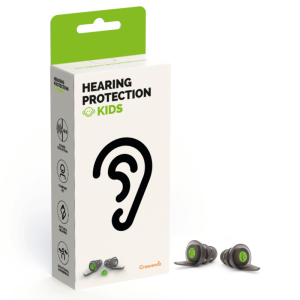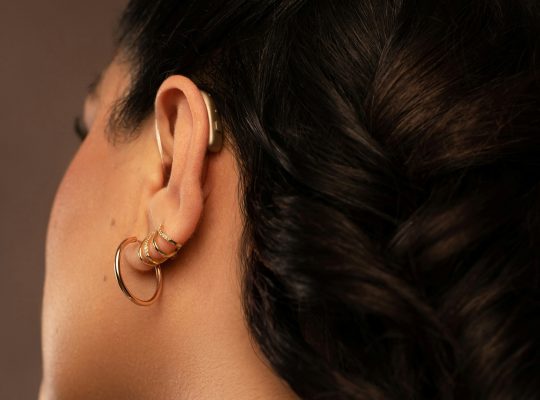A full stadium. Tens of thousands of people in the stands. The tension rises, the crowd sings, the ball goes in … and then it erupts. The cheers, the horns, the drums, the sirens: the roof literally goes off. But how loud is it really, a soccer stadium full of frenzied fans?
In this blog, we dive into the noise level of soccer stadiums. Because while it may only sound like coziness and atmosphere, sometimes it’s different for your ears. Especially if you’re sitting right next to an avid drummer….
Decibel in the stadium: how loud is it?
To get right to the point: an average soccer stadium produces between 90 and 120 decibels during a game. Of course, that depends on the stadium itself, the type of crowd, the acoustics and – let’s be honest – how well your club is playing.
By comparison:
- 90 dB = about a lawnmower or heavy city traffic
- 100 dB = a power saw or concert
- 110 dB = a rock concert or a remote Formula One car
- 120 dB = painful sound threshold for the human ear
During a cheering moment or goal, the volume can really spike. Measurements have been taken at major clubs where the cheering reached 120 dB. And that is – you guessed it – well above the safe limit for your hearing.
The loudest stadiums in the world
Some stadiums are known for their extreme noise levels. This is not only in the number of people, but also in how the stadium is built. Dense stands and a low roof cause sound to linger and be amplified.
Some legendary sound boxes:
- Arrowhead Stadium (Kansas City Chiefs, NFL, not soccer but we’ll take it for a moment): world record with 142.2 dB
- Turk Telekom Arena (Galatasaray): regularly 130+ dB during top games
- Signal Iduna Park (Borussia Dortmund): with their ‘Gelbe Wand’ (the yellow wall), the south stand creates impressive walls of sound
- Camp Nou (FC Barcelona): not the highest decibel record, but with nearly 100,000 fans at once, the stadium impresses with massiveness and atmosphere
- Anfield (Liverpool): famous for the sing-along moment at “You’ll Never Walk Alone,” intense and goosebump-worthy
It is clear: soccer fans can best compete with a rock concert or a fighter jet takeoff in terms of sound.
When does sound become dangerous?
The risk of hearing damage begins at 85 decibels. The higher the volume, the shorter you may be exposed to it. Here are some guidelines:
- 85 dB – risk of damage after 8 hours
- 100 dB – after 15 minutes
- 110 dB – after 1 to 2 minutes
- 120 dB – direct damage possible
So imagine sitting in the front row for 90 minutes, near the fanatical supporters with megaphones and drums. That’s not a party for your ears.
Children in the soccer stadium? Note!
More and more parents are taking their children to the stadium. Great fun, of course – the atmosphere, the team feeling, the excitement. But young ears are more vulnerable than those of adults. And children do not always indicate when something hurts or is uncomfortable.
Thus, good hearing protection for children is not a luxury. Consider:
- Earmuffs that seal well
- Children’s earplugs with sound filter
- A spot in the stadium where it is a little quieter (not next to the drums, that is)
Earplugs and soccer atmosphere: does it go together?
A common reason for not wearing earplugs in the stadium is that you would miss the atmosphere. But that doesn’t have to be the case at all. Nowadays there are earplugs with special music filters that dampen the volume but preserve the experience. You can still hear the singing, the announcer and the stadium noise – only without your ears getting upset.
Also available are custom-made earplugs that are comfortable and barely visible. Ideal for regular stadium attendees.
Hard of hearing or hearing aid? Pay extra attention
For people with hearing loss, a stadium visit can be overwhelming. The chaos of sound, the noise of cheering people, shrill sounds from whistles and megaphones – it can be very exhausting. If you wear a hearing aid, it often does not automatically dampen loud noises. On the contrary: it can actually amplify it.
What helps?
- Put your hearing aid temporarily on a lower setting or in a ‘noise reduction’ mode
- Wear light hearing protection over that if it really gets too much
- Find a seat slightly further away from the loudest boxes
Why we take this issue seriously
Hearing damage is not always immediately noticeable. Sometimes it occurs gradually, or you only notice it after multiple exposures to excessively loud sounds. And once damaged hearing does not return.
We say it often, but it remains true: your ears are not made for extreme volumes. And when you’re at the stadium every weekend, it’s easily too much of a good thing without protection.
Tip for clubs and supporter associations
There is increasing attention to hearing protection at festivals and events – and that’s good. But in soccer, the topic remains underexposed. While thousands of supporters go home with ringing ears after a night at the stadium.
Clubs would do well to offer earplugs at the entrance. Or warn of peak noise during fireworks shows and goals. And supporter associations? Just make earplugs part of the outfit.
In conclusion
A soccer stadium is a place full of emotion, noise and magic. But if you go home after the game with a squeak or ringing in your ear, it’s not a good souvenir. With a simple set of earplugs or earmuffs, you can enjoy yourself to the fullest – without sacrificing your hearing.
So the next time you walk into the stadium, remember that peak of 120 dB. And take something with you to protect your ears. You’ll still hear the victory – but then again tomorrow.












